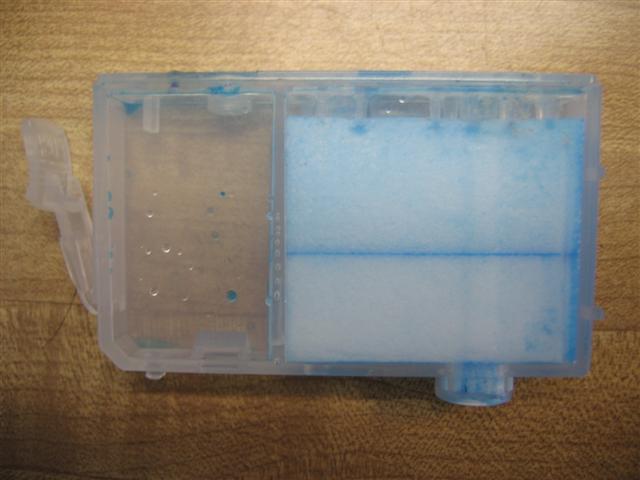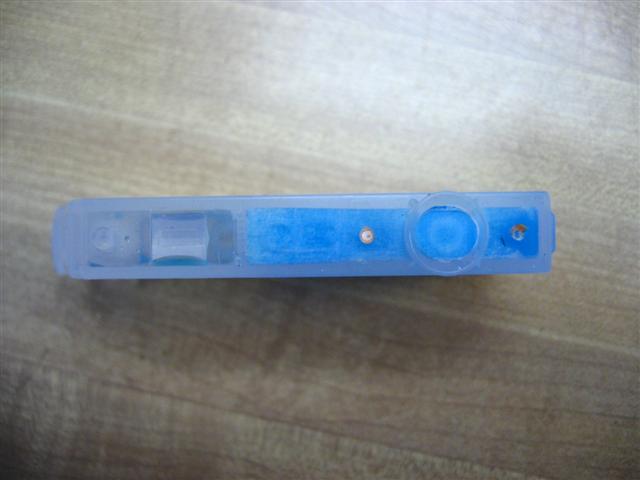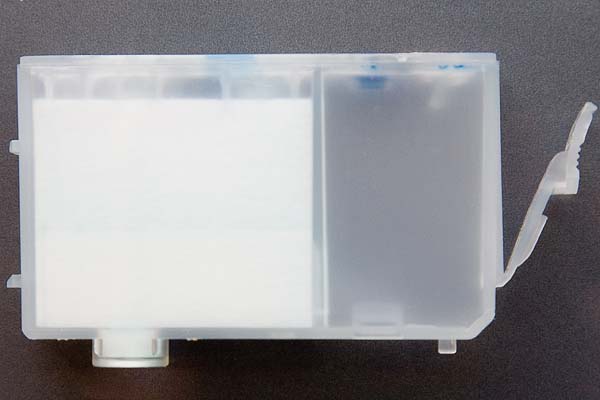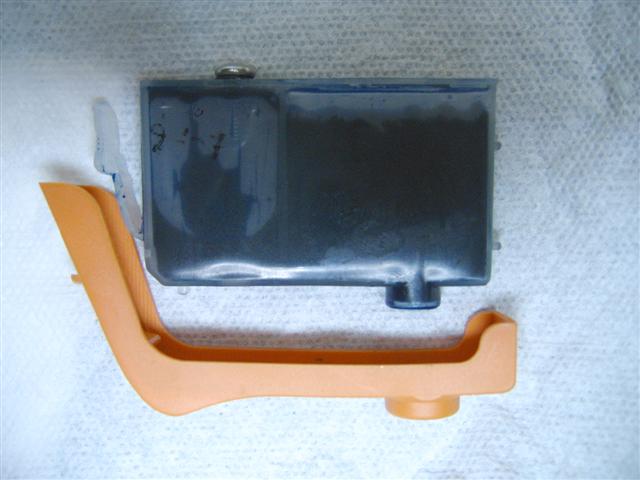Neither of my two cyan BCI-6 cartridges will print any more. One is an original Canon for my i860 and the other is a generic cartridge - -probably from Atlantic Ink.
I followed Grandad's purge procedure and then purged the printhead with water also. The other colors are working although occasionally the BCI-6-black cartridge gets faint on a 4 color purge test, so that one's probably being a little starved as well. If I take out the refill screw and leave the hole over the tank open, it might drip one drop in 30 seconds. Not like it used to if I didn't get the tank sealed and it leaked all over. Neither cartridge has been refilled more than 4 or 5 times and this is their first cleaning purge. I've been using the correct ink from Atlantic ink. I couldn't tell you how old the ink is - at least 3 years anyway.
Here are two pictures of a purged cartridge:
This is the side view.

It doesn't look like the sponge is lifted up off of the bottom to prevent the ink from coming out, and it's pretty white, so nothing should be holding the ink in.
Here's a view of the bottom:
 [/url]
[/url]
Although the sponge on the opening is lightly stained blue (as are my hands) it doesn't look clogged, and if I put alcohol on it, it soaks into the sponge.
Any thoughts on how to get the cartridges to drip correctly?
RWL
I followed Grandad's purge procedure and then purged the printhead with water also. The other colors are working although occasionally the BCI-6-black cartridge gets faint on a 4 color purge test, so that one's probably being a little starved as well. If I take out the refill screw and leave the hole over the tank open, it might drip one drop in 30 seconds. Not like it used to if I didn't get the tank sealed and it leaked all over. Neither cartridge has been refilled more than 4 or 5 times and this is their first cleaning purge. I've been using the correct ink from Atlantic ink. I couldn't tell you how old the ink is - at least 3 years anyway.
Here are two pictures of a purged cartridge:
This is the side view.

It doesn't look like the sponge is lifted up off of the bottom to prevent the ink from coming out, and it's pretty white, so nothing should be holding the ink in.
Here's a view of the bottom:

Although the sponge on the opening is lightly stained blue (as are my hands) it doesn't look clogged, and if I put alcohol on it, it soaks into the sponge.
Any thoughts on how to get the cartridges to drip correctly?
RWL


